Understanding Vladimir Putin, the man The manwho fooled the world
The Russian president has always shown us exactly who he is. So why did it take the invasion of Ukraine for us to believe him?
Vladimir Putin was annoyed – or maybe just bored. The Russian leader had been patiently fielding questions from a small group of international journalists in the restaurant of a modest hotel in Davos. Then one of the queries seemed to irritate him. He stared back at the questioner, an American, and said slowly, through an interpreter: “I’ll answer that question in a minute. But first let me ask you about the extraordinary ring you have on your finger.”
All heads in the room swivelled. “Why is the stone so large?” Putin continued. A few of the audience began to giggle and the journalist looked uncomfortable. Putin took on a tone of mock sympathy and continued: “You surely don’t mind me asking, because you wouldn’t be wearing something like that unless you were trying to draw attention to yourself?” There was more laughter. By now, the original question had been forgotten. It was a masterclass in distraction and bullying.
The year was 2009, and Putin had already been in power for almost a decade. But this was my first encounter with him in the flesh, during his visit to the World Economic Forum. Putin’s ability to radiate menace, without raising his voice, was striking. But so was the laughter of his audience. Despite the violence of his Russian government – as demonstrated in Chechnya and Georgia – western opinion-formers were still inclined to treat him as a pantomime villain.
I was reminded of this just before Russia’s invasion of Ukraine. In a televised meeting at the Kremlin with his closest advisers, Putin toyed with Sergei Naryshkin, the head of his foreign intelligence service – making the feared securocrat look like a stuttering fool. The pleasure he took in humiliating somebody in front of an audience was once again on display. But this time, nobody was laughing. Putin was about to plunge Europe into its biggest land war since 1945. Russian troops launched a full-scale invasion on 24 February. Within a month, more than 10 million Ukrainians had fled their homes, thousands of troops and civilians had been killed and the coastal city of Mariupol had been destroyed.
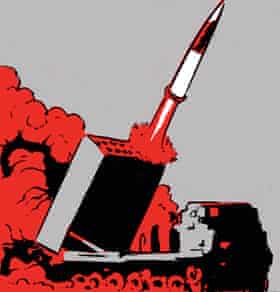
Even though western intelligence services had warned for months that Russia was poised to attack, many experienced Putin-watchers, both in Russia and the west, refused to believe it. After more than 20 years of his leadership, they felt that they understood Putin. He was ruthless and violent, no doubt, but he was also believed to be rational, calculating and committed to Russia’s integration into the world economy. Few believed he was capable of such a reckless gamble.
Looking back, however, it is clear that the outside world has consistently misread him. From the moment he took power, outsiders too often saw what they wanted and played down the darkest sides of Putinism.
In fact, the outside world’s indulgence of Putin went much further than simply turning a blind eye to his excesses. For a rising generation of strongman leaders and cultural conservatives outside Russia, Putin became something of a hero and a role model. As his admirers saw it, the Russian leader had inherited a country humiliated by the breakup of the Soviet Union. Through strength and cunning, he had restored its status and global power, and even regained some of the territory lost when the USSR broke up. And he had delighted nationalists and populists the world over by successfully defying self-righteous American liberals such as Hillary Clinton and Barack Obama. Dmitry Peskov, Putin’s spokesman, was not simply spouting propaganda when he said in 2018: “There’s a demand in the world for special, sovereign leaders, for decisive ones … Putin’s Russia was the starting point.”
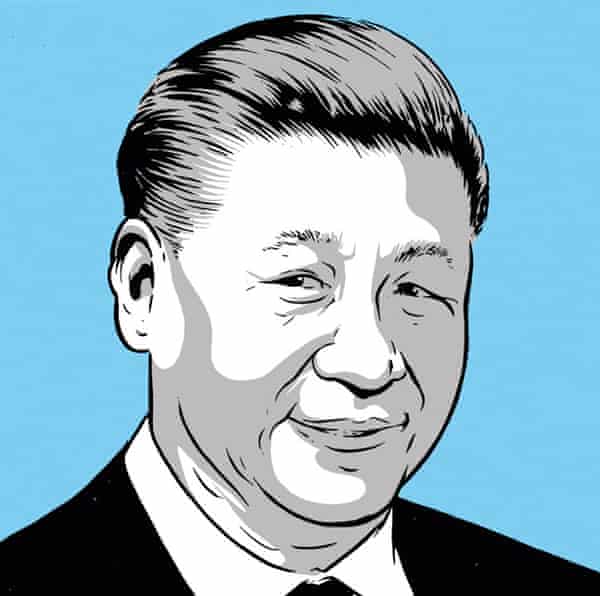
The Putin fanclub has had numerous members in the west over the years. Rudy Giuliani, President Trump’s close adviser and lawyer, expressed admiration for Putin’s annexation of Crimea, remarking: “He makes a decision and he executes it, quickly. That’s what you call a leader.” Nigel Farage, the former leader of Ukip and the Brexit party, and a friend of Donald Trump, once named Putin the world leader he most admired, adding: “The way he played the whole Syria thing. Brilliant. Not that I approve of him politically.” Matteo Salvini, the leader of the populist right Northern League party and a former deputy prime minister of Italy, flaunted his admiration for the Russian leader by being photographed in a Putin T-shirt in Red Square. Rodrigo Duterte, the president of the Philippines, has said, “My favourite hero is Putin.”
Most important of all, Xi Jinping is also a confirmed admirer. A week after being appointed as president of China in early 2013, Xi made his first state visit overseas – choosing to visit Putin in Moscow. On 4 February 2022, just 20 days before the invasion of Ukraine, Putin met Xi in Beijing for their 38th summit meeting. Shortly afterwards, Russia and China announced a “no limits” partnership. As the joint Russian-Chinese statement made clear, the two leaders are united in their hostility to American global power and to the pro-democracy “colour revolutions” they accuse Washington of stirring up around the world – from Ukraine to Hong Kong. Putin and Xi are both strongman rulers who have centralised power around themselves and encouraged a cult of personality. They are, as Alexander Gabuev, a Russian academic, puts it, “the tsar and the emperor”. Whether this partnership of strongmen will survive the Russian invasion of Ukraine is now one of the most important questions in international politics.
Putin was sworn into office as president of Russia on 31 December 1999. But at first it was not obvious that he would last very long in the job, let alone that he would emerge as the most aggressive challenger to the western liberal order and the pioneer of a new model of authoritarian leadership. As the chaotic Yeltsin era of the 1990s drew to a close, Putin’s ascent to the top job was eased by his former colleagues in the KGB. But he also had the approval of Russia’s richest and most powerful people, the oligarchs, who saw him as a capable administrator and “safe pair of hands” who would not threaten established interests.
Viewed from the west, Putin looked relatively reassuring. In his first televised speech from the Kremlin, given on New Year’s Eve 1999, just a few hours after taking over from Yeltsin, Putin promised to “protect freedom of speech, freedom of conscience, freedom of the mass media, ownership rights, these fundamental elements of a civilised society”. In March 2000, he won his first presidential election and proudly asserted: “We have proved that Russia is becoming a modern democratic state.” When Bill Clinton met Putin in the Kremlin for the first time, in June 2000, he declared his Russian counterpart “fully capable of building a prosperous, strong Russia, while preserving freedom and pluralism and the rule of law”.
Yet while Putin may initially have found it convenient to use the rhetoric of liberal democracy, his early actions as president told a different story. In his first year in office, he moved immediately to rein in independent sources of power, to assert the central authority of the state and to use warfare to bolster his own personal position – all actions that were to become hallmarks of Putinism. The escalation of the war in Chechnya made Putin seem like a nationalist hero, standing up for Russian interests and protecting the ordinary citizen from terrorism. In an early move that alarmed liberals, the new president reinstated the old Soviet national anthem. His promises to protect media freedom turned out to be empty: Russia’s few independent television networks were brought under government control.
As Putin established himself in office, the image-makers got to work crafting a strongman persona for him. Gleb Pavlovsky, one of Putin’s first spin doctors, later described him as a “quick learner” and a “talented actor”. Key images were placed in the Russian media and around the world: Putin on horseback, Putin practising judo, Putin arm-wrestling or strolling bare-chested by a river in Siberia. These photographs attracted mockery from intellectuals and cynics. But the president’s handlers were clear-eyed. As Pavlovsky later told the Washington Post, the goal was to ensure that “Putin corresponds ideally to the Hollywood image of a saviour-hero”.
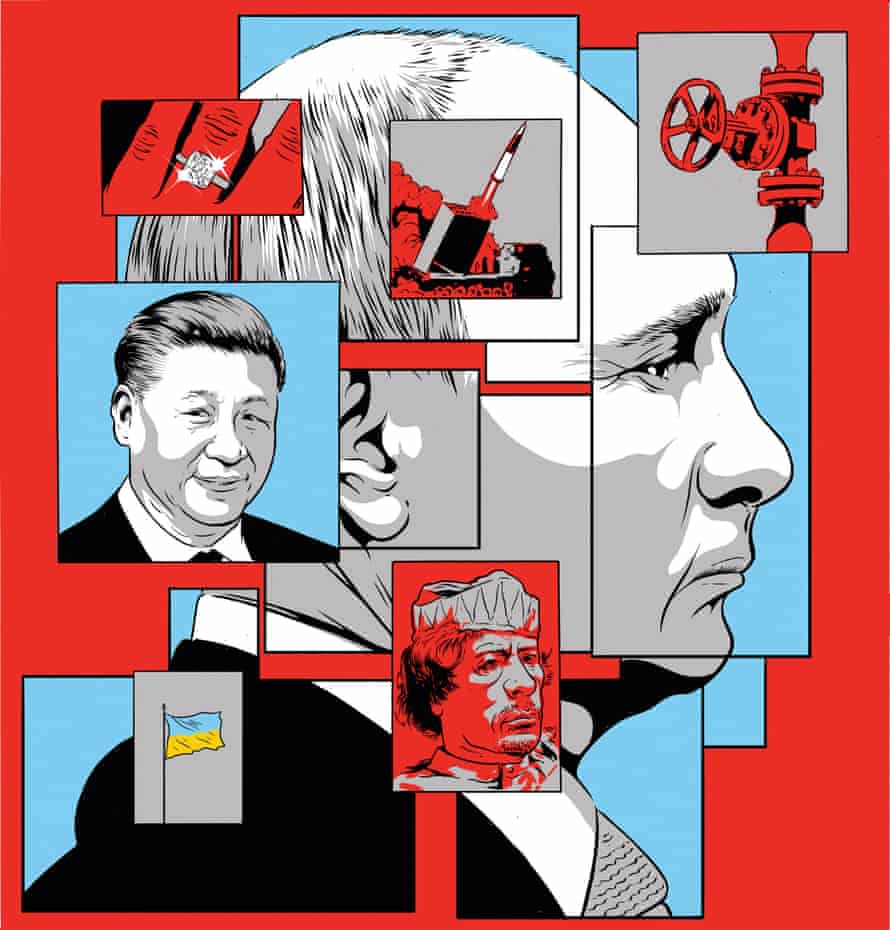
In any case, Russians were more than ready for a strongman to ride to their rescue. The collapse of the Soviet system in 1991 had allowed for the emergence of democracy and freedom of speech. But as the economy atrophied and then fell apart, many experienced a severe drop in living standards and personal security. By 1999, life expectancy for Russian men had fallen by three and a half years to below 60. A UN report attributed this to a “rise in self-destructive behaviour”, which it linked to “rising poverty rates, unemployment and financial insecurity”. Under those circumstances, a decisive leader who promised to turn back the clock had real appeal.
Long before Trump promised to “make America great again”, Putin was promising to bring back the stability and pride of the Soviet era to those Russians who had lost out in the 1990s. But his nostalgia was not restricted to the social cohesion of Soviet times. Putin also yearned to restore some of the USSR’s lost international clout. In a speech in 2005, Putin labelled the collapse of the Soviet Union “the greatest geopolitical catastrophe of the 20th century”. As the years have passed, he has become increasingly preoccupied by Russian history. In the summer of 2021, he published a long essay entitled On the Historical Unity of Russians and Ukrainians – which, even at the time, some saw as a manifesto for invasion. Delving through centuries of history, Putin attempted to prove that Ukraine was an artificial state and that “Russia was robbed, indeed” when Ukraine gained independence in 1991.
Fyodor Lukyanov, an academic who is close to the Russian leader, told me in 2019 that one of Putin’s enduring fears was the loss of Russia’s status as one of the world’s great powers for the first time in centuries. His resentment at what he regarded as American slights and betrayals set Putin on a collision course with the west. A landmark moment came with a speech he gave at the Munich Security Conference in 2007.
That speech was a direct challenge to the west and an expression of cold fury. He accused the US of an “almost uncontained hyper use of force – military force – in international relations, force that is plunging the world into an abyss of permanent conflicts”. The Putin of 2000, who had expressed pride at Russia’s transformation into a modern democracy, had given way to a man who denounced western talk of freedom and democracy as a hypocritical front for power politics.
The Munich speech was not just an angry reflection on the past. It also pointed the way to the future. The Russian president had put the west on notice that he intended to fight back against the US-led world order. It foreshadowed a lot of what was to come: Russia’s military intervention in Georgia in 2008, its annexation of Crimea in 2014, its dispatch of troops to Syria in 2015, its meddling in the US presidential election of 2016. All of these actions burnished Putin’s reputation as a nationalist and a strong leader. They also made him an icon for strongmen throughout the world who rejected western leadership and the “liberal international order”.
This indictment of the west goes back to the 1990s. It is argued repeatedly in Moscow that the expansion of Nato to take in countries of the former Soviet empire (including Poland and the Baltic states) was a direct contradiction of promises made after the end of the cold war. Nato’s intervention in the Kosovo war of 1998‑9 added to the list of grievances proving, in the Kremlin’s eyes, both that Nato is an aggressor and that western talk of respecting sovereignty and state borders was nothing but hypocrisy. Russians were not reassured by the western riposte that Nato was acting in response to ethnic cleansing and human rights abuses by Serbia. As one liberal Russian politician put it to me in 2008, in a moment of frankness: “We know we have committed human rights abuses in Chechnya. If Nato can bomb Belgrade for that, why could they not bomb Moscow?”

Putin’s case against Nato also takes in the Iraq war launched by the US and many of its allies in 2003. For him, the massive bloodshed in Iraq was proof that the west’s self-proclaimed pursuit of “democracy and freedom” only brings instability and suffering in its wake. If you mention the brutal behaviour of Russian forces in Chechnya or Syria in Moscow, you will always have the Iraq war thrown back in your face.
Crucially, the west’s promotion of democracy has posed a direct threat to Putin’s own political and personal survival. From 2003 to 2005, pro-democracy “colour revolutions” broke out in many of the states of the former Soviet Union – including Ukraine, Georgia and Kyrgyzstan. If demonstrators in Independence Square in Kyiv could bring down an autocratic government in Ukraine, what was to stop the same happening in Red Square? In Russia, many believed it was a “fairytale” that these were spontaneous uprisings. As a former intelligence operative whose entire professional career had involved running “black operations”, Putin was particularly inclined to see the CIA as pulling the strings. The goal, as the Kremlin saw it, was to install pro-western puppet regimes. Russia itself could be next.
The shock of the Iraq war and the colour revolutions were the recent experiences that informed Putin’s Munich speech in 2007. And, as the Kremlin saw it, this pattern of western misdeeds continued. Putin points to the western powers’ 2011 intervention in Libya that resulted in the overthrow of Muammar Gaddafi – something he believes they had promised they would not do.
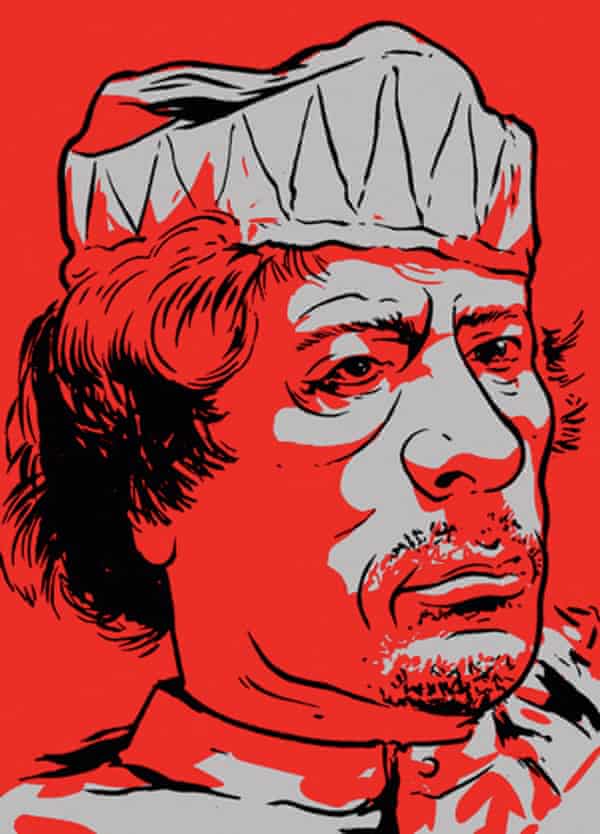
That episode is a particularly sore spot for Putin, since it took place during the four years from 2008 to 2012 when he was serving in the lesser job of prime minister, having stepped aside as president in favour of his acolyte Dmitry Medvedev. As Putin’s supporters see it, a naive Medvedev was duped into supporting a UN resolution that allowed for a limited intervention, only for western powers to exceed their mandate in order to overthrow and kill Gaddafi. They have no time for the response that the Libyan intervention was made on human rights grounds, but that events then took on a life of their own, as the Libyan rebellion gained steam.
Medvedev’s alleged naivety in allowing the Libyan intervention proved useful for Putin, however: it established the idea that he was indispensable as Russia’s leader. Any substitute, even one chosen by Putin, would leave the country vulnerable to a scheming and ruthless west. In 2011, Putin announced that he intended to return as president, after the potential presidential term had been extended to two consecutive periods of six years. This announcement provoked rare public demonstrations in Moscow and other cities, which again fanned Putin’s fears about western schemes to undermine his power. I was in Moscow in January 2012 and witnessed the marches and banners, some of which carried pointed references to Gaddafi’s fate. Putin understood the parallels. He commented publicly about how disgusted he had been by the footage of Gaddafi’s murder – which perhaps reflected a certain concern about his own potential fate. The fact that Hillary Clinton, then America’s Secretary of State, expressed public support for the 2012 demonstrations was deeply resented by Putin and may have justified, in his mind, Russia’s efforts to undermine Clinton’s presidential campaign in 2016.
Putin secured his re-election, but his sense that the west remained a threat to Russia was further stoked by events in Ukraine in 2013-14. The prospect of that country signing an association agreement with the European Union was seen as a serious threat in the Kremlin, since it would pull Russia’s most important neighbour – once an integral part of the USSR – into the west’s sphere of influence. Under pressure from Moscow, the Ukrainian government of President Viktor Yanukovych reversed course. But this provoked another popular uprising in Kyiv, forcing Yanukovych to flee. The loss of a compliant ally in Kyiv was a major geopolitical reverse for the Kremlin.
Putin’s response was to dramatically raise the stakes, by crossing the line into the use of military force. In February 2014, Russia invaded and annexed Crimea, a region that was part of Ukraine but had belonged to Russia until 1954 and was populated largely by Russian-speakers. It was also, by agreement with the Ukrainians, the home of Russia’s Black Sea fleet. In the west, the annexation of Crimea, along with Russian military intervention in eastern Ukraine, was seen as a flagrant violation of international law that many feared could be the prelude to further acts of aggression.
But in Russia, the annexation was widely greeted as a triumph – it represented the nation’s fightback. Putin’s approval ratings in independent opinion polls soared to over 80%. In the immediate afterglow, he came closer to achieving the ultimate goal of the strongman ruler: the complete identification of the nation with the leader. Vyacheslav Volodin, the speaker of the Russian parliament, exulted: “If there’s Putin, there’s Russia. If there’s no Putin, there’s no Russia.” Putin himself crowed that Crimea had been taken without a shot being fired.
The west’s response was to slap economic sanctions on Russia. But western indignation did not last long. Four years later, Russia hosted a successful World Cup. At the final, Putin sat with the presidents of France and Croatia, two EU nations, in the VIP box in Moscow.
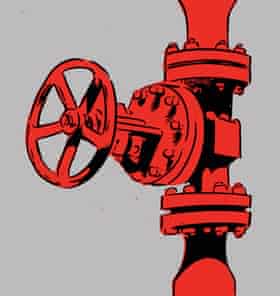
The ease with which Putin annexed Crimea – and the swiftness with which the west seemed prepared to forgive – may have laid the ground for an unjustified confidence that led to the invasion of Ukraine. His overreach is also a reminder of the flaws in the strongman model of leadership. Decades in office can cause a leader to succumb to megalomania or paranoia. The elimination of checks and balances, the centralisation of power and the promotion of a cult of personality make it more likely that a leader will make a disastrous mistake. For all these reasons, strongman rule is an inherently flawed and dangerous model of government.
Tragically, that lesson is being learned all over again – in Russia and Ukraine. An invasion that was meant to secure Russia’s place as a great power and Putin’s place in history has clearly gone wrong. Putin is now involved in a brutal war of attrition. Western sanctions will see the Russian economy shrink dramatically this year, and the Russian middle-class is witnessing the disappearance of many of the consumer goods and travel opportunities that emerged with the end of the cold war.
The unofficial goal of western policy is clearly to force Putin from power. But the endgame may not come as swiftly as we would like. Deeply entrenched in his decades-long mission, Putin is now even less likely to give up power voluntarily, since his successors might repudiate his policies, or even put him on trial.
The prospects for popular uprising are equally poor, despite the many brave Russians who have indicated their disgust over the war. Any protests are likely to be swiftly crushed with violence and imprisonment, as they were in neighbouring Belarus in 2020 and 2021. A third scenario – the possibility of an enlightened group within the elite seizing power – seems out of reach, too. Organising a palace coup against Putin will be very difficult: all dissenters were purged from the Kremlin long ago. Putin also takes his personal security very seriously: several of his former bodyguards have become rich in their own right. While there will be many within Russia who are dismayed by the course that events have taken, orchestrating that diffuse discontent into a coherent plot looks like a formidable challenge.
The difficult truth is that Putin’s strongman style has defined his rule over Russia – and despite his many crimes and misdemeanours, those same strongman tactics may preserve him in power for years to come.
Gideon Rachman is chief foreign affairs commentator for the Financial Times. His new book, The Age of the Strongman, is published by Vintage (£20). To support The Guardian and Observer, order your copy at guardianbookshop.com. Delivery charges may apply.
No comments:
Post a Comment